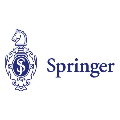Within the realm of rapidly advancing wireless sensor networks (WSNs), distributed detection assumes a significant role in various practical applications. However, critical challenge lies in maintaining robust detection performance while operating within the constraints of limited bandwidth and energy resources. This paper introduces a novel approach that combines model-driven deep learning (DL) with binary quantization to strike a balance between communication overhead and detection performance in WSNs. We begin by establishing the lower bound of detection error probability for distributed detection using the maximum a posteriori (MAP) criterion. Furthermore, we prove the global optimality of employing identical local quantizers across sensors, thereby maximizing the corresponding Chernoff information. Subsequently, the paper derives the minimum MAP detection error probability (MAPDEP) by inplementing identical binary probabilistic quantizers across the sensors. Moreover, the paper establishes the equivalence between utilizing all quantized data and their average as input to the detector at the fusion center (FC). In particular, we derive the Kullback-Leibler (KL) divergence, which measures the difference between the true posterior probability and output of the proposed detector. Leveraging the MAPDEP and KL divergence as loss functions, the paper proposes model-driven DL method to separately train the probability controller module in the quantizer and the detector module at the FC. Numerical results validate the convergence and effectiveness of the proposed method, which achieves near-optimal performance with reduced complexity for Gaussian hypothesis testing.
翻译:暂无翻译


